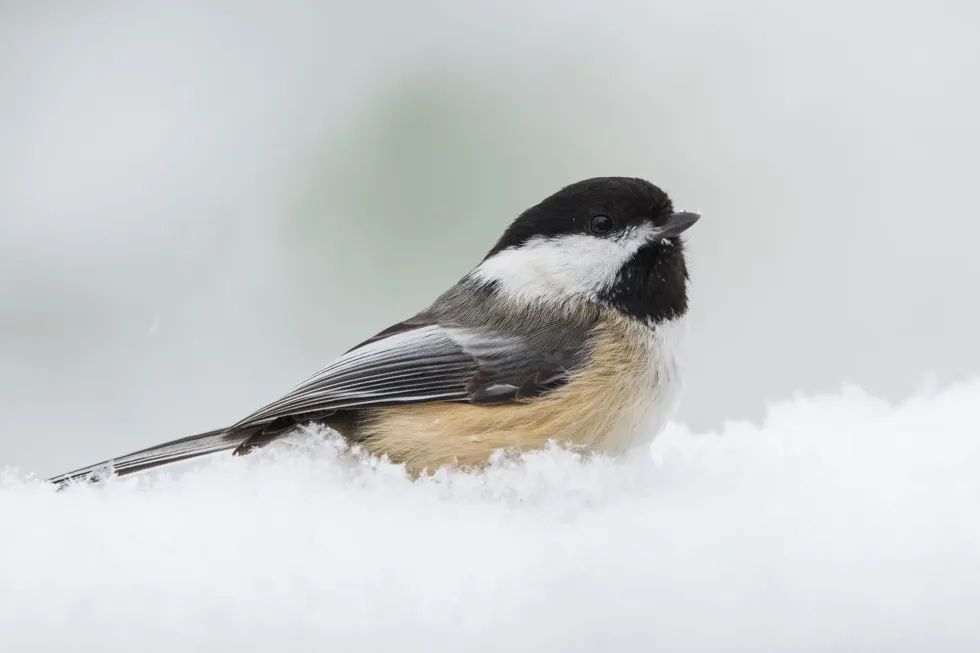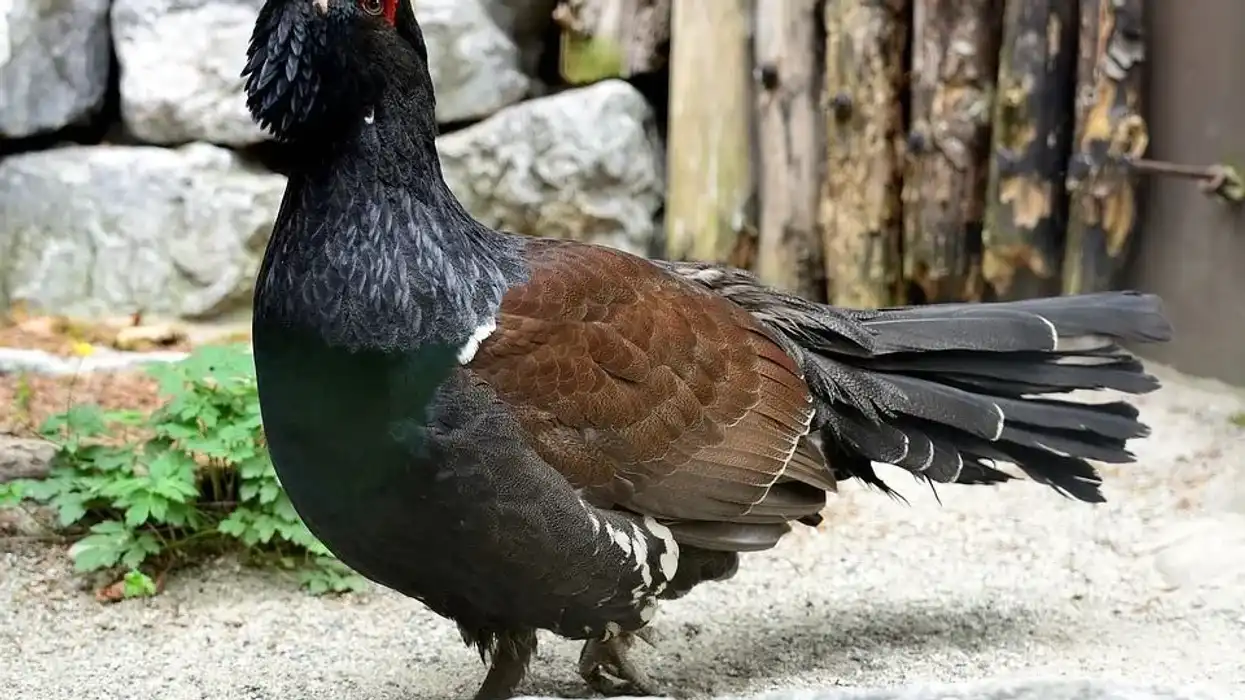There are around seven different chickadee species in the world. The black-capped chickadee, Poecile atricapillus, is one of those.
These birds are known as black-capped based on the dark cap on their head. These chickadees belong to the northern parts of the United States and are commonly spotted in parks at bird feeders.
Flocks of black-capped chickadees are known for many different things like their specific chickadee calls, their nest cavities, and lastly their ability to hoard food for winter. These birds store, or rather hide, their seeds and remember their hiding places even after a month or two.
These birds with small bills and long tails are often confused with Carolina chickadees or the nuthatch breed. Read on to know the differences between them and to understand more about this species. Found these black-capped chickadees facts interestingly informative? Check out our mealy parrot and red-backed shrike facts too.
Black-Capped Chickadee Interesting Facts
What type of animal is a black-capped chickadee?
These flocks of chickadees are birds that belong to the Paridae family of animals.
What class of animal does a black-capped chickadee belong to?
These North American birds belong to the Aves class of animals.
How many black-capped chickadees are there in the world?
Although the black-capped chickadee, Poecile atricapillus, is considered to be of Least Concern, their exact population in the world today is not known.
Where does a black-capped chickadee live?
These chickadees are found mainly in the areas of Canada and North America namely in the regions of Massachusetts and Maine.
What is a black-capped chickadee's habitat?
These birds prefer open habitats that consist of forests, parks, cottonwood groves, and woods. Most of these birds are also seen flying toward bird feeders that are hanging by trees in weedy fields and willow thickets.
They also end up nesting in manmade boxes of wood shavings provided they have favorable habitats around in which they can forage for food easily.
This North American bird species is also seen to make its nest site in alder trees and birch trees, in the natural cavities of these trees. These birds are also active in winter woods, especially in bird feeders holding different food items that might make up their food.
Who does a black-capped chickadee live with?
Living in small groups is considered common in all species of the capped chickadee. Black-capped chickadees too live in small chickadee flocks. They are known to each other based on their aggression ranking. Yes, these birds follow a hierarchy where the most aggressive bird has the highest rank and others follow!
How long does a black-capped chickadee live?
There has been a record of a male bird of this species that lived for 13 long years. Despite this, the average life expectancy of flocks of chickadees is considered to be just two to three years.
How do they reproduce?
These birds are monogamous, territorial, and solitary during their breeding season. The breeding season occurs between April and June.
Their breeding population is known to nest in trees with a natural cavity, such as a woodpecker hole, or a nesting box made of wood shavings. A pair of chickadees have a habit of investigating and exploring their home territory or their potential nest hole together. After mating the female lays around six to eight eggs in the nest.
If a nest has to be built by the bird, it is the female who takes all the responsibility for this and then lays the eggs. These eggs are incubated by the female for 11-14 days and the male takes the responsibility of feeding the female and the young ones after they hatch.
After a span of half a month, the babies leave the nest to live an independent life.
What is their conservation status?
Just like most other capped-chickadee birds, black-capped chickadees belong to the Least Concern list of conservation according to the International Union for Conservation of Nature (IUCN).
Black-Capped Chickadee Fun Facts
What does a black-capped chickadee look like?
Both male and female chickadees look similar. Males usually have a bigger body than females and this bird has a black-colored cap on its head with a white-colored bib on its throat that covers its cheeks.
The bird has a light-brown or rusty-colored underpart with small thin legs and rounded wing feathers that are white and black or slate gray. Its tail is usually long and its bill is short. The bird goes through a molt once every year.
How cute are they?
Chickadee flocks are quite cute with their small size and varied, distinctive songs.
How do they communicate?
These birds have many types of vocalizations and different calls that they use to communicate about different situations. They use 'fee-bee' and 'fee-dee' calls with variations of 'fees' and 'dees' to give their flocks predator alarms or to communicate about threats.
Apart from these chickadee alarm calls, these birds are also known for their 'chick-a-dee-dee' song that they sing during breeding and in springtime.
How big is a black-capped chickadee?
This species of chickadee bird is twice the size of the bee hummingbird with a length of 4.7-5.9 in (12-15 cm). This bird has a wingspan of 6.3-8.3 in (16-21 cm).
How fast can a black-capped chickadee fly?
These birds flap their wings in quick motions and can fly at a speed of around 12 mph (19 kph).
How much does a black-capped chickadee weigh?
This black-capped bird is a small one with an average weight range of just 0.3-0.5 oz (9-14 g).
What are the male and female names of the species?
The black-capped chickadee does not have specific names for males and females.
What would you call a baby black-capped chickadee?
The young birds of these chickadees are called chicks.
What do they eat?
These birds living on the forest edge have an omnivorous diet that consists of both carnivore and herbivore food items. These chickadees' food list consists of insects, worms, other invertebrates, insect eggs, as well as the carrion of dead animals.
Apart from insects, their food list also consists of grains, fruits, and seeds. These birds love to eat peanut butter and sunflower seeds that might be kept in bird feeders.
Are they dangerous?
Although these birds have an aggressive nature among each other, they do not harm humans in any way. Instead, these birds are considered friendly and flocks of them can nest in a manmade nest from time to time.
Would they make a good pet?
Even though these birds are cute, they are wild animals who (although they might visit a manmade nest or your bird feeders for food) cannot make a good pet.
Did you know...
This species of chickadees are known to live in tight nest cavities in tree holes so that they can insulate themselves from the winter cold and the snow outside. They sleep in these nest cavities too, as this is where they feel safest.
This species is considered to be extremely friendly and social as most of them recognize the other birds during their flights at bird feeders.
These birds don't always mate for life but they do form monogamous pairs and tend to stay in these pairs for more than one year.
What's the difference between a chickadee and a nuthatch?
These two breeds of birds are seen to overlap as both of them share similar habitats and similar anatomy. However, the nuthatch has a longer beak than the black-capped chickadee and is compact so they can easily go up and down the tree trunks, unlike the chickadees. Black-capped chickadees also have longer tails than the nuthatch.
What is the difference between a black-capped chickadee and a Carolina chickadee?
The black-capped chickadee species is comparatively bigger than the Carolina chickadee species and is found in the northern regions. They have an alarm call that has a slower 'dee' sound and their bib is starkly black-and-white in color.
Carolinas are smaller and are found in the south. They have a faster alarm call, or 'dee' note, with a grayish bib on their cheeks and are smaller than black-capped chickadees.
Here at Kidadl, we have carefully created lots of interesting family-friendly animal facts for everyone to discover! Learn more about some other birds from our prairie chicken facts and peregrine falcon facts pages.
You can even occupy yourself at home by coloring in one of our free printable black-capped chickadee coloring pages.










